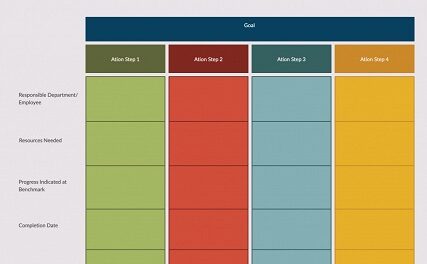Should You Manage Your Time or Energy at Work in 2024?
Time management or energy management? It’s not either. The most effective strategy is to combine the two.
Want to get more work done? It’s important to know what works best. As a starting point, people usually choose to focus on one of two approaches: time management or energy management.
While these terms are sometimes used interchangeably when discussing productivity, they are not the same. Time management involves managing the time of day most efficiently to get more done in less time.
On the other hand, energy management is more about managing yourself; by identifying ahead of time the parts of the day where you typically feel the most energetic and clear-headed, you can strategize when scheduling your most important tasks.
While time management has long been the strategy of choice for increasing productivity, there is a growing consensus that energy management is also essential in today’s fast-moving work environment.
Time management and energy management go hand-in-hand — once you understand the peaks and valleys of your physical and mental energy levels, you can use that information to make the most of your allotted time.
So instead of wondering whether to manage your time or energy, consider the following to help you design a hybrid approach that combines the two strategies to achieve your work goals:
Let’s know how Should You Manage Your Time or Energy at Work
Know when you work best
The starting point for effective time and energy management is to identify the times of the day when you have the most and least energy.
It’s more than knowing whether you’re a lark (one who feels and performs best in the early morning) or an owl (one who stays up late when work is done), though that’s part.
Suppose you map your energy levels while awake. In that case, you’ll find that in addition to the obvious rise and fall in the morning and evening, your focus, stamina, motivation, and drive fluctuate throughout the day.
Record or map the flow of physical and mental energy hourly for a week or more. Look for patterns. Your goal is to spot the time blocks when you’re performing at your highest productivity, not when your energy store is at its lowest, preventing you from effectively reaching your goals.
For example, you might find that all cylinders are firing for 2 1/2 hours after you wake up, followed by an hour of morning slump.
Then you get another wind soon after lunch that takes you to 3 pm, only to break down for the rest of the workday, feeling less focused and focused. Then, you’ll be rejuvenated in the early evening with a new energy store until bedtime.
Schedule your peak hours
Once you’ve done this scouting, don’t leave it to your luck to see if you’ll make the most of the best time of your day. Use your knowledge of energy fluctuations to arrange your best self for the most critical projects.
Taking the example above, this might mean that you can start working when your 2 1/2 hour peak productivity window opens in the morning.
Instead of wasting your precious time checking news and emails, spend your time writing a challenging due report.
Extending the same strategy throughout the day, you might avoid scheduling meetings after lunch to take advantage of your second wind and save more of your day-to-day busy work, such as recharging those low-energy spots after 3 am and 3 pm.
Invest time to create more energy
Another way time and energy management intersects are that when you dedicate your time to activities that energize you, the investment can pay off tenfold. Stimulating activities include exercise, meditation, and self-care rituals like reading or listening to music.
At first, it looks like you’re “wasting” time on these things because they require you to take a break from your workday to do them.
But the truth is, you’re usually refreshed from these breaks, recovered and ready to run in a way that you don’t stop staring at the whetstone all the time.
Save energy and create more time
You can also try to save energy for the important things, which can help give you more time. This strategy involves managing boundaries and being able to say “no” to invitations and opportunities that are draining or not getting you closer to your goals.
By saving energy for the things that matter, you have extra bandwidth to focus on what you want and need to do.
Another way to conserve energy to create more time is to rest. You are exhausted, overwhelmed, and ultimately exhausted by constantly draining energy and work.
Allow yourself to recover from big efforts — and prioritize downtime and critical time — to ensure you have enough energy for a long game.






